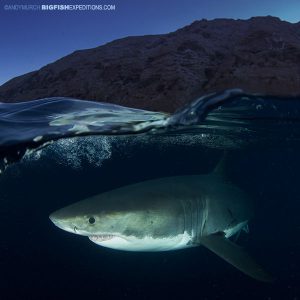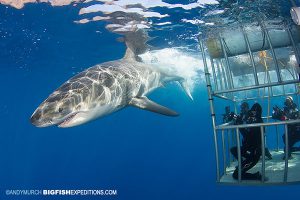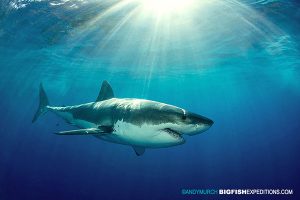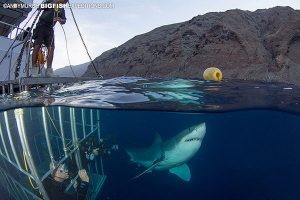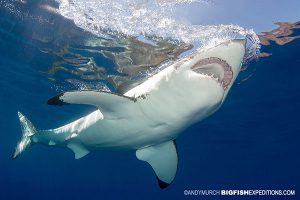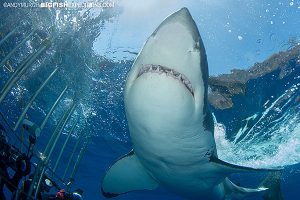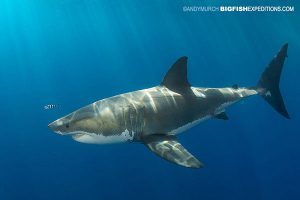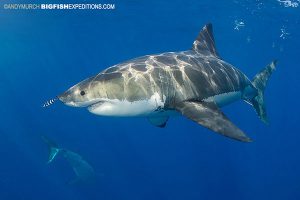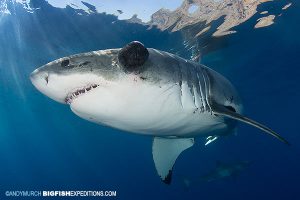As you can see from the pictures, Guadalupe Island delivered some amazing great white shark action this year. From the moment we dropped anchor, white sharks started gathering under our boat and they stayed until the very end of the last day when we pulled anchor and headed back to the mainland.
There were always one or two sharks close to the boat. At the busiest point we counted 8 different white sharks at the same time but there may have been even more just beyond our range of vision.
As well as exceptionally good great white shark action, we were fortunate enough to have crystal clear water and flat calm seas so the photographic opportunities were outstanding. Watching these enormous predators swim gracefully by while shards of sunlight rippled off their backs was a magical scene.
It has been a few years since I visited Guadalupe Island and I was keen to shoot the action from as many different angles as possible to convey the changing moods of the island. Fortunately, the current held the boat in the perfect position to capture endless sun splashes as the afternoons drew to a close.
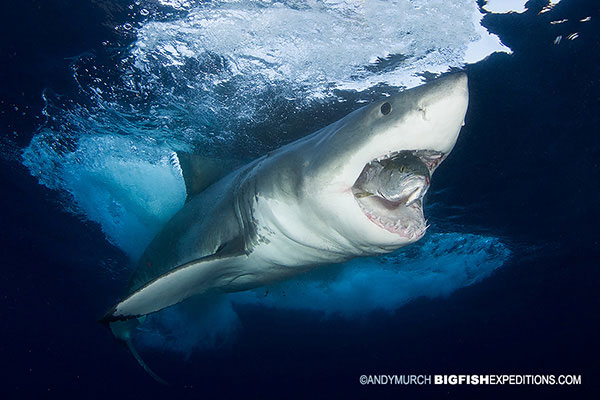
With such mill pond flat conditions it was a great opportunity for some of the photographers in the group to try their luck at split shots – images that capture the the terrestrial world and the aquatic realm at the same time. After a little trial and error I realized that the best way to nail good over/under images of white sharks was to skip a couple of turns underwater and sit on top of the cages instead. That way I could dip my camera right in the path of the sharks while the wrangler drew them past me.
Traditionally, the divers get out of the water at sunset but the action was so good that we stayed in or on the cages long after the sun had disappeared behind the island. That led to some epic shots of white sharks appearing from the inky darkness.
Not everyone brought a camera. Some guests just wanted to experience the rush of an enormous great white shark sliding by them within touching distance.
The mission of the shark wranglers was not to actually feed the sharks but to encourage them to stay near the cages. However, some of the more persistent sharks eventually stole a scrap or two by launching at the hang baits from odd angles that the wranglers couldn’t see.
Occasionally, the sharks would make a run at the bait and end up pressed up against one of the cages. Fortunately, the sharks are hardy enough to come away completely unscathed and the cages are robust enough to withstand the impact.
We stayed in the cages until the light levels dropped so low that our cameras could no longer focus. Snapping sharp focus portraits of white sharks framed against the blackness was an interesting new challenge. Eventually, we reluctantly climbed waterlogged back on deck to warm up and begin the downloading process to make room for more images the following day.
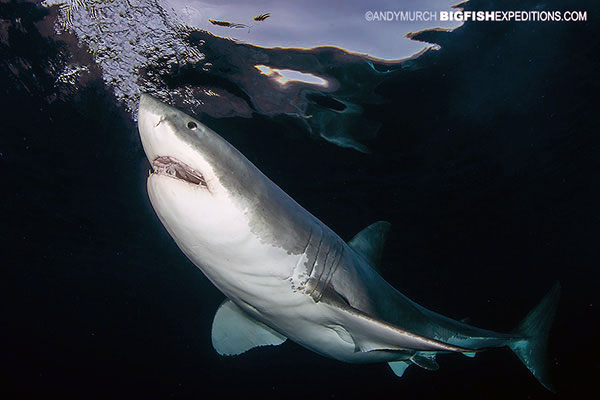
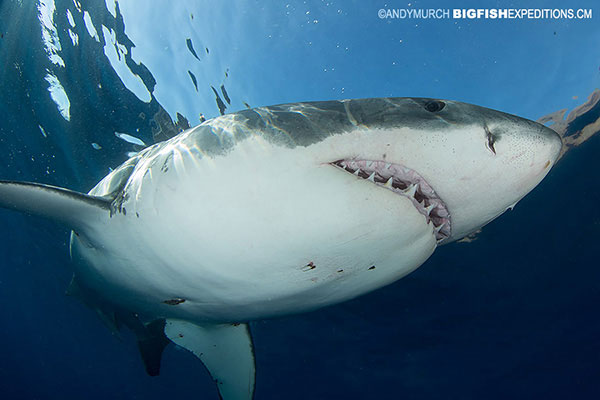
By the end of our fourth day at sea, we had seem more individual white sharks than I have ever seen on a trip to Guadalupe. Some sharks we were able to identify in our ship’s white shark guide – a thick photographic index of all the white sharks seen at Guadalupe to date. One of the easiest sharks for us to spot was Mele a large male that has a distinctive growth on one cheek.
Each year at Guadalupe the male white sharks arrive first. by September the females are starting to trickle in so it was nice to see a few females in the mix on our trip.
At the end of the trip we got back to land later than intended because one of the ships motors had some issues but other than that it was an epic adventure with a great group of shark fanatics. Next year we will be back at Guadalupe but in October when the sharks are even bigger! Join us there:
